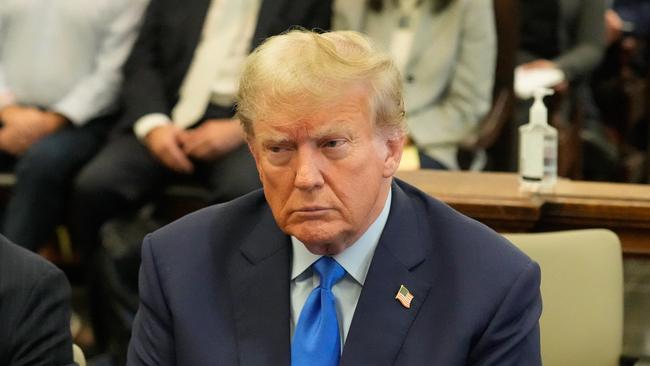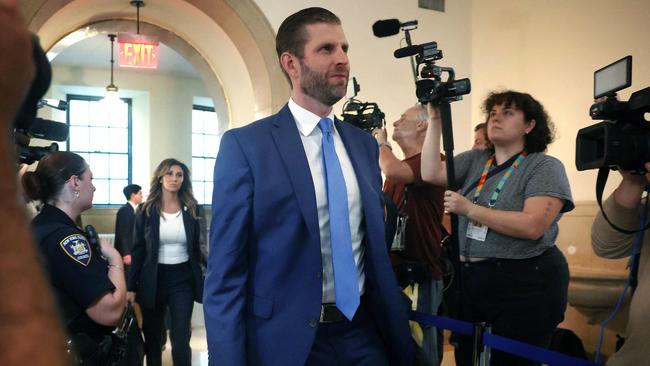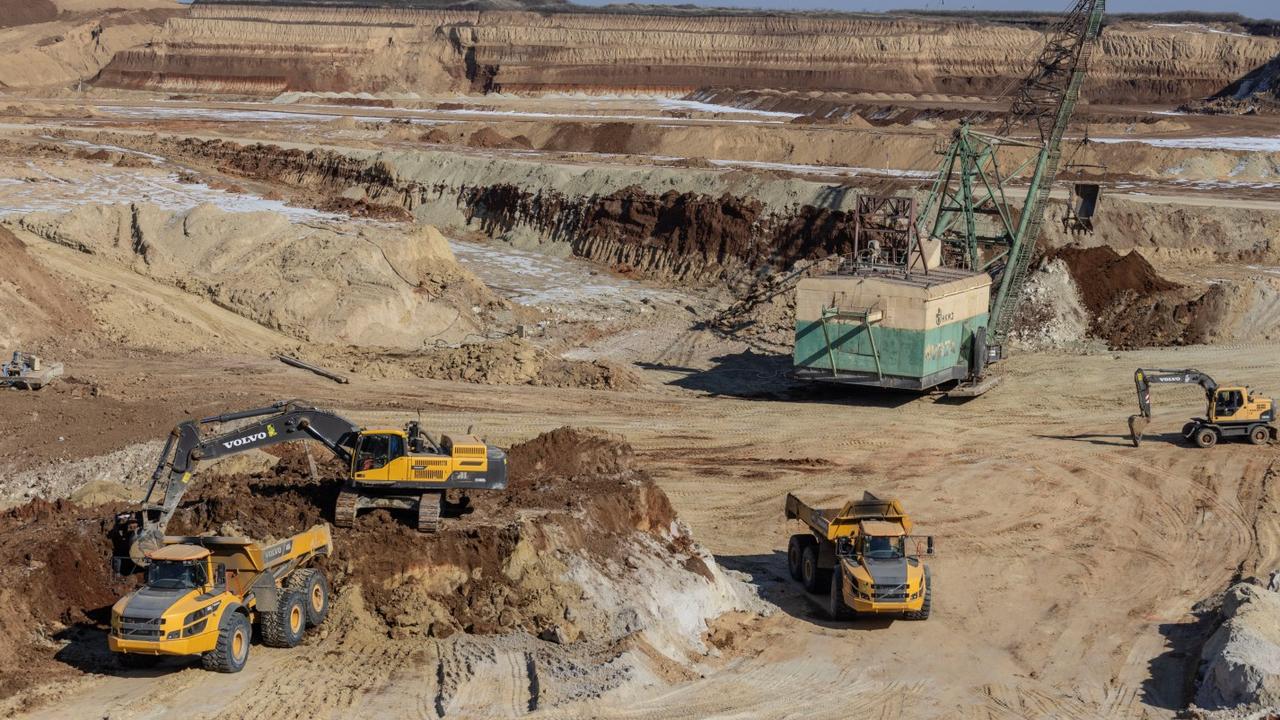A case that cuts right to the heart of the deal for Donald Trump
Before Donald Trump entered a Manhattan court room overnight on Monday he declared he would come ‘to fight for my name and reputation’.

Donald Trump sat at the defence table and a screen in front of him lit up with an image of himself under the headline “Avoids Responsibility”.
He listened with pursed lips as a small, neat-looking lawyer accused him of vastly overvaluing his three-floor apartment in Trump Tower, the skyscraper that was the foundation stone of his property empire, exaggerating the worth of his other buildings and golf courses, and allegedly generating at least $US100m by lying about his empire.
On the screen, showing documents and evidence being presented to the court, he watched a clip of his former fixer Michael Cohen say that he had done this because “he wanted to be higher on the Forbes list” of billionaires.
Kevin Wallace, for the state of New York, declared that Trump had also done it to get better loan terms, saving at least $US100m.
“It may be one thing to exaggerate for a publication, and a television audience,” Wallace said. “But you can’t do it while conducting business in the state of New York.”
And if Wallace and New York’s Attorney-General had their way, Trump would never be allowed to conduct business in his home town again.
The former president lost a civil case in New York this year in which he was accused of rape. He did not show up for that. But the claim that Trump Tower and Mar-a-Lago were not really worth as much money as he said they were had cut him to the quick.
He declared on social media on Monday that he would come “to fight for my name and reputation”. State Attorney-General Letitia James, who brought the case and is black, was “corrupt and racist”, he said, and the mild-mannered judge overseeing the case was “unfair, unhinged, and vicious in his pursuit of me”.

Outside the state Supreme Court in Lower Manhattan, Trump called the case “a sham”, adding: “My financial statements are phenomenal.”
Inside, a large and elegant courtroom crowded with media, police and lawyers awaited his arrival. First came Secret Service agents before Trump in a blue suit and a blue tie, his hair as erect and motionless as one of the stone scrolls on the pillars outside.
His mouth opened in a fish-like motion that might have been a sigh or a suppressed yawn. He did not look at James, who sat at the front of the gallery. His son Eric took a seat at a bench across from the Attorney-General, some way behind his father. Don Jr is one of the defendants too, but not his daughter Ivanka: the case against her was thrown out by an appeals court because she was not part of the Trump Organisation from 2016.
Judge Arthur Engoron climbed to his seat and got to the first order of business, the pronunciation of his surname: “Engoron. Not Engor-an.”
He allowed five photographers and one cameraman to come into court and shoot the former president at the defence table. They assembled in front of him like a firing squad, while Trump, motionless, stared back at them.
The judge then addressed the gallery on the case it was there to see, in case it did not know it, and how it might keep track of it online. He launched into a history of the law governing this particular case.

Engoron, as a student at Columbia, had earned money driving a taxi, and there was something of the cab driver about him as he turned in his chair to tell the story of Jacob Javits, a former New York attorney-general who introduced this particular law. The judge nodded towards Trump’s Floridian lawyer, Christopher Kise. “I want to make sure that Mr Kise returns to Florida with some New York history,” he said.
The judge added that “despite lame attempts at humour … I take my job very seriously”. He was not necessarily an expert on any one thing “but one thing I know a bit about is the legal definition of fraud”, he said.
He had insisted this trial begin on this day, “come hell or high water”. In New York there had been torrential rain.
“We have had the high water but we are ready to go,” he said.
Then came the opening statement from Wallace, delivered in a soporific monotone, discussing valuations and emails and accounting principles.
Kise delivered an equally dry presentation. “The evidence will establish president Trump has made billions of dollars by being right about real-estate investment,” said the caption above one of his PowerPoint slides.
“There is no such thing as objective evaluations either in economic theory, or in the applicable laws, regulations and principles that govern this case,” he said.

After Kise, Engoron ordered a 10-minute break. When the Trump team returned, it was like a football squad after a halftime tirade from their coach. “I wasn’t planning to speak today until I saw what the Attorney-General said outside,” Alina Habba declared. James had said, while campaigning for office, “she was going to get Trump”.
Trump’s value included his tremendously valuable brand, she added. “There are a lot of people in this room that don’t like that, and this is probably why we are here.”
The judge ruled last week that the Trump Organisation had overvalued its assets by between $US812m and $US2.2bn, and referred to a tax assessment of Mar-a-Lago valuing it at $US18m.
“How is that possible?” Habba asked. “The Trump properties are Mona Lisa properties. I assure you that there is a person out there who would buy that spectacular property for way over a billion dollars. That is not fraud, that’s real estate.”
In the late afternoon, after bone-dry testimony from Donald Bender, who did Trump’s accounts, Judge Engoron suggested some of it would have to be shown to relate to the period at issue, from 2011 to 2021, or else “this has all been a waste of time”.
“We certainly would agree with that, judge,” Kise interjected. Beside him, the former president raised two thumbs in the air.
Trump complained there was no jury, but it appears his legal team did not request one.
The Times


